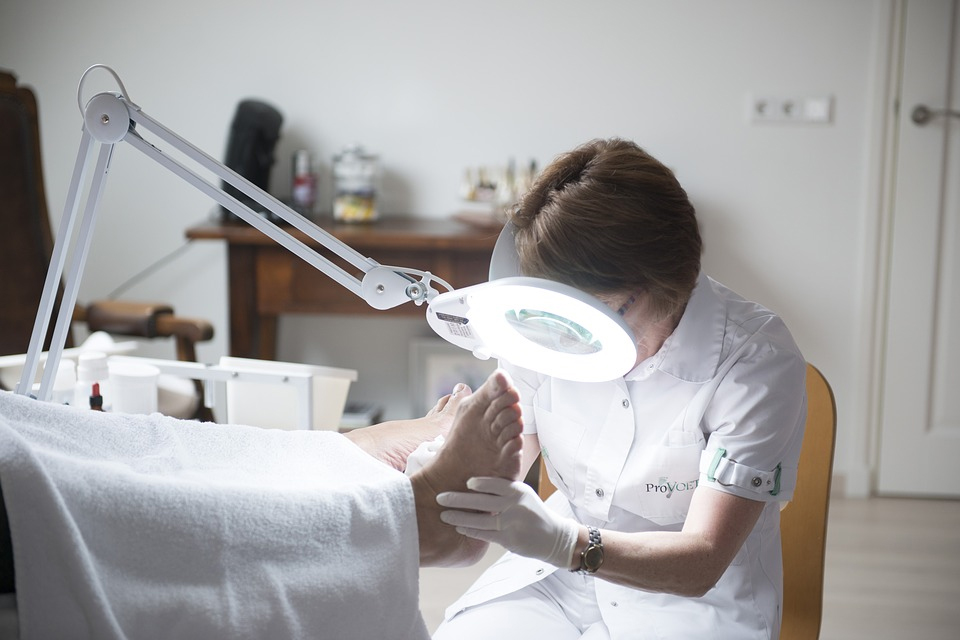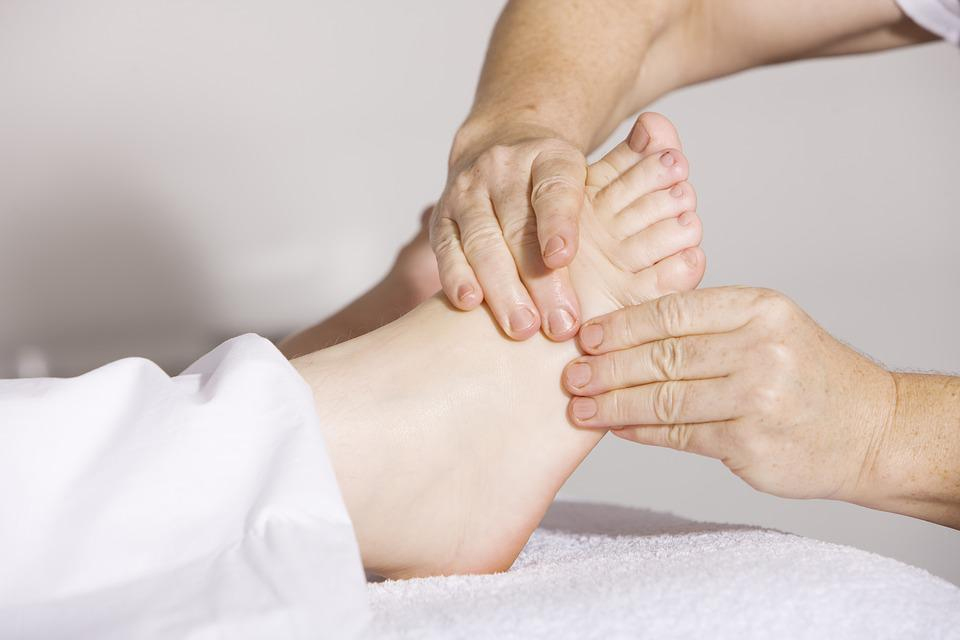 It is no secret that taking care of your health is one of the most important things you can do. After all, if you aren’t healthy, then you can’t enjoy any other aspect of your life to the fullest. Of course, many people don’t take care of their health as diligently as they should, only going to the doctor or seeing a healthcare professional when they have an obvious problem. Feet are especially prone to injury and other problems, so a podiatrist is one of the first specialists you should see when something seems “off” even in the slightest.
It is no secret that taking care of your health is one of the most important things you can do. After all, if you aren’t healthy, then you can’t enjoy any other aspect of your life to the fullest. Of course, many people don’t take care of their health as diligently as they should, only going to the doctor or seeing a healthcare professional when they have an obvious problem. Feet are especially prone to injury and other problems, so a podiatrist is one of the first specialists you should see when something seems “off” even in the slightest.
1. Ankle Sprain
If you got a dollar every time you heard the line “it’s just a sprain” in a movie, you’d be a very rich person. Ankle sprains aren’t just a “simple sprain” – they cause swelling, pain, and tenderness to the ligaments in your ankle, which can make walking difficult or painful. As the doctors from the Align Foot & Ankle Center in Santa Barbara explain, an ankle sprain can happen suddenly and can seem like nothing major at first but may lead to dislocations and other problems if left untreated. If you’ve sprained your ankle, it’s best to go see a podiatrist as soon as possible. The good news is that seeing a podiatrist can help you heal faster and may help prevent long-term problems, and if worse comes to worst, can also perform surgery to repair serious damage.
2. Heel Pain Or Spurs
If you’ve ever experienced heel pain, then you know just how debilitating it can be. Sometimes, heel pain can make it difficult or even impossible to walk, and can linger for weeks or months if left untreated. Heel spurs are a common cause of heel pain – they’re bony growths that form on the heel bone, a piece of bone that acts as a cushion to lessen the impact of each step on your heel. If the bone spurs are too large or cause irritation to the surrounding tissues, you can experience pain that is severe enough to make it difficult to walk or even stand.
Seeing a podiatrist can help both diagnose and treat the issue before it gets out of hand. In most cases, a podiatrist will likely recommend rest and possibly physical therapy, and they may also suggest wearing a special shoe insert or orthotic device, especially if the spur is large.
Surgery is typically only necessary in extreme cases. If regula, non-invasive treatment doesn’t alleviate your problem, your podiatrist may need to perform surgery on the heel in order to remove portions of the spur.
3. Corns And Calluses
Corns and calluses are notorious for being a nuisance as they can make it difficult or painful to walk or even to wear shoes. These skin growths are usually caused by friction, pressure, and other factors that can cause irritation and discomfort over time, so seeing your podiatrist at the first sign of discomfort is key.
Your doctor can recommend a number of strategies for dealing with corns and calluses, including over-the-counter treatments like corn pads or a callus file, as well as more aggressive treatments like paring the corn down or removing the callus entirely. It’s important to note that at-home treatments aren’t always effective, and some people find them to be painful, so it’s best to talk to your doctor about the best way to deal with your particular corn or callus.
4. Bunions
Bunions are bony lumps that develop when the big toe rotates towards the second toe. Bunions form as a result of the base joint of the big toe becoming misaligned, leading to inflammation. As the bunion grows, the tip of the big toe is pushed inwards towards the other toes, potentially causing pain and altered gait.
Not everyone experiences pain with a bunion. If you do experience discomfort from a bunion, it’s important to see a podiatrist. While there is no cure for bunions, there are a number of things that your doctor can do to help ease the discomfort. In some cases, simply wearing wider shoes or using pads to cushion the bunion can be enough, but in more extreme cases, your doctor might recommend surgery to correct the deformity. Surgery is typically a last resort solution as the recovery time is extensive.
5. Hammer toes
Hammer toes are another common type of foot deformity that can result in discomfort or pain. Hammer toes are a deformity usually found in the second or third toe that causes it to curl down rather than point forward. Hammer toes may be present from birth but typically develop over time due to arthritis, injury or wearing tight, pointed toed shoes. The condition may cause discomfort or pain while walking and may also increase the risk of developing bunions, calluses and corns.
Like bunions, hammer toes aren’t curable, and many at-home treatments don’t offer much respite. That said, there are a number of different treatment solutions available for hammer toes – everything from stretching exercises that you can do yourself to using pads and other devices to cushion the toes, or wearing special shoes. In some cases, surgery is necessary to correct the condition and ease the pain.
6. Athlete’s Foot
Athlete’s foot (tinea pedis) is caused by a fungus that thrives in moist environments such as gyms and locker rooms,places synonymous with athletes, hence the name. As a fungal infection, tinea can affect anyone who comes into contact with the fungus, which means that it can be difficult to get rid of if you don’t see a doctor right away.
There are a number of different treatments for athlete’s foot – everything from over-the-counter creams and ointments to prescription medications designed to kill the fungus. If the fungus isn’t gone after a few weeks of treatment, your doctor might also recommend surgery to remove the affected skin and tissue. While the option is there, you’re not likely to need surgery as long as you simply use prescribed medications and creams as directed.
If you have a problem with your feet or lower limbs, you shouldn’t hesitate to schedule an appointment to see a podiatrist. Although podiatrists are specialist medical professionals, you don’t need a referral to see one. The fastest and easiest way to search for and book podiatry appointments online is with MyHealth1st.
 If you’re experiencing any of these issues, it’s important to see a podiatrist right away. These problems won’t go away on their own, and they can often become worse over time if they’re not treated properly. Your podiatrist will be able to recommend the best course of treatment for you, which might involve anything from stretching exercises to surgery. So don’t wait – if you’re experiencing these issues, seek out a podiatrist today!
If you’re experiencing any of these issues, it’s important to see a podiatrist right away. These problems won’t go away on their own, and they can often become worse over time if they’re not treated properly. Your podiatrist will be able to recommend the best course of treatment for you, which might involve anything from stretching exercises to surgery. So don’t wait – if you’re experiencing these issues, seek out a podiatrist today!

